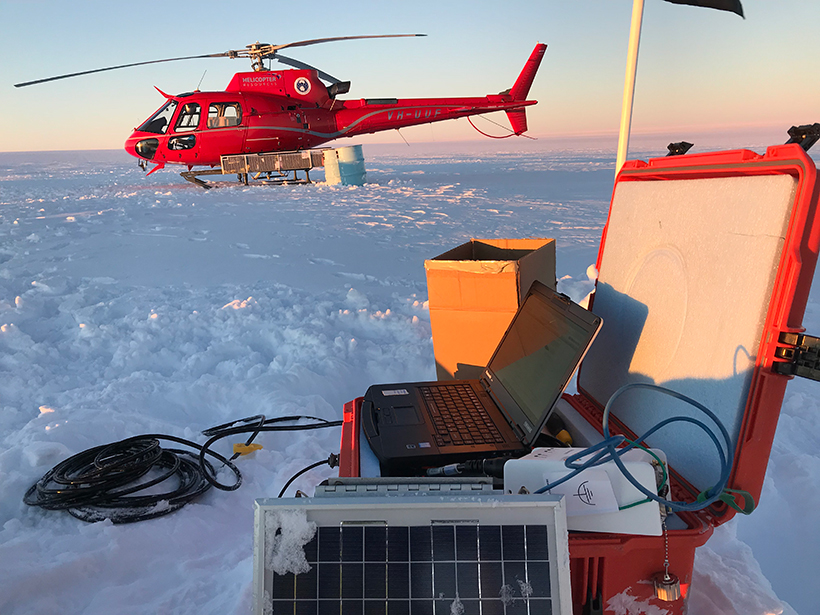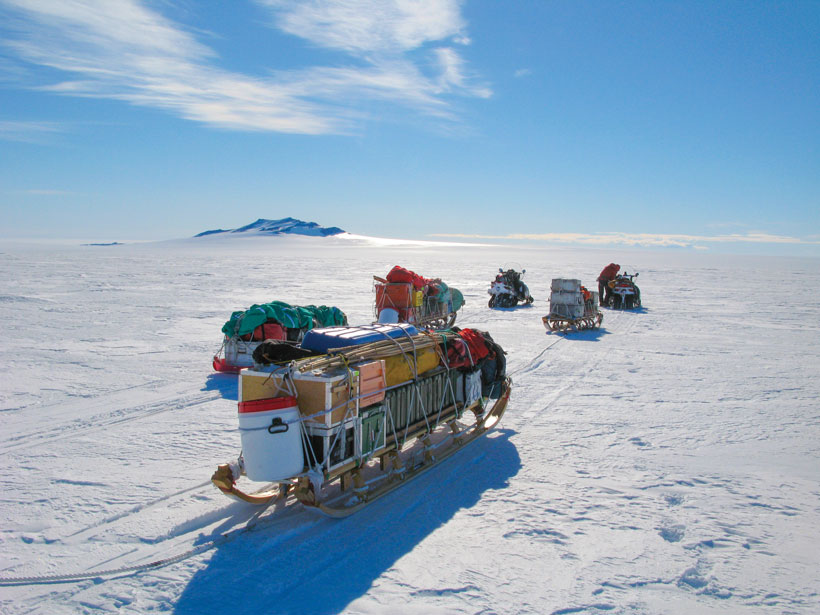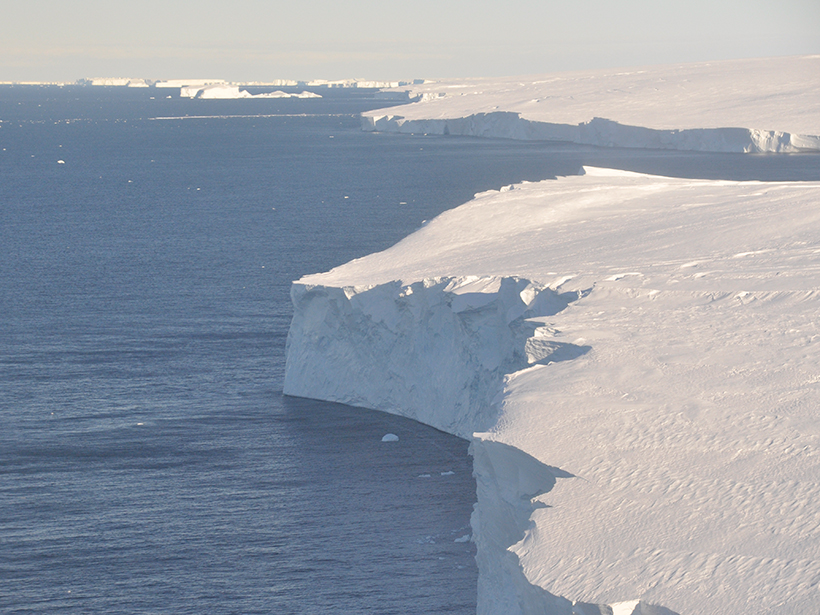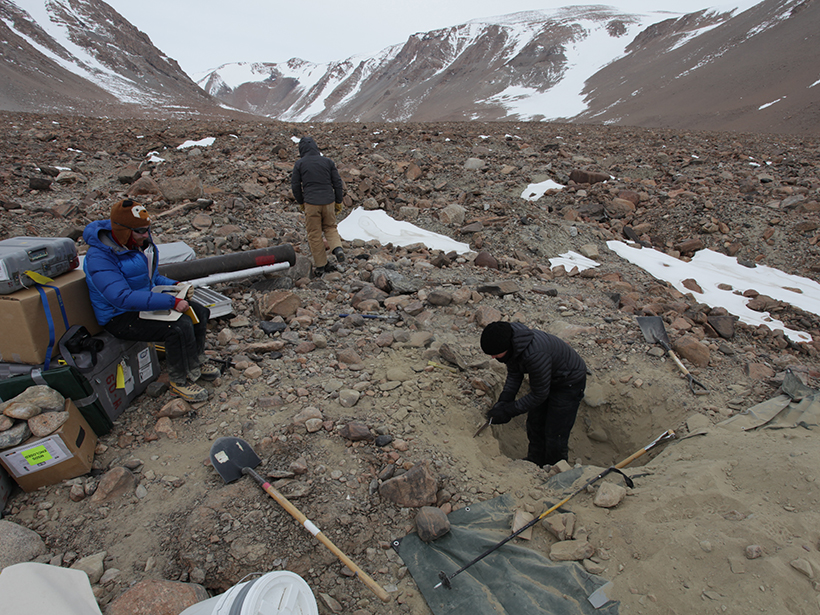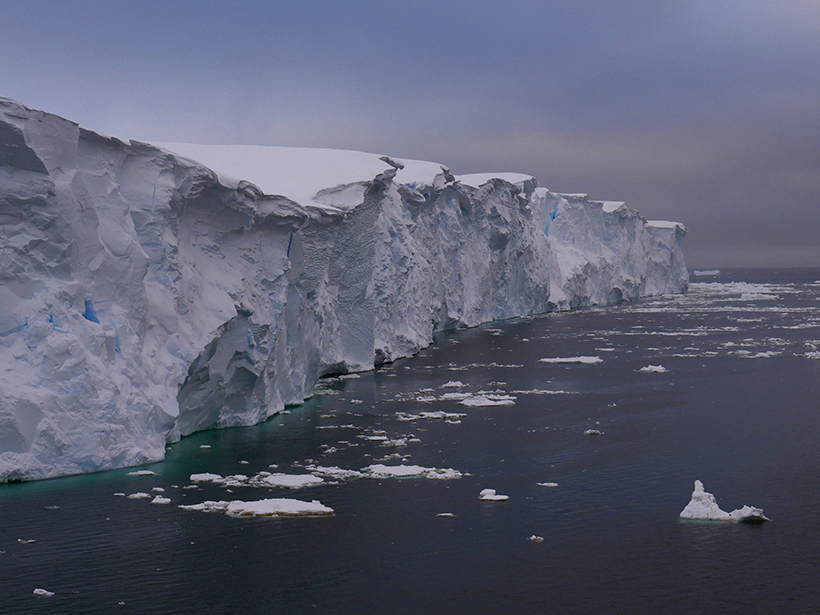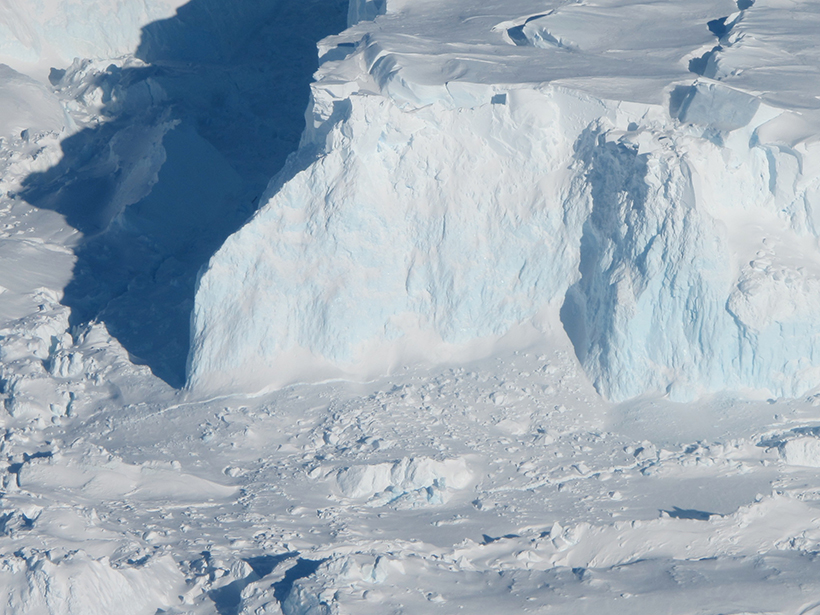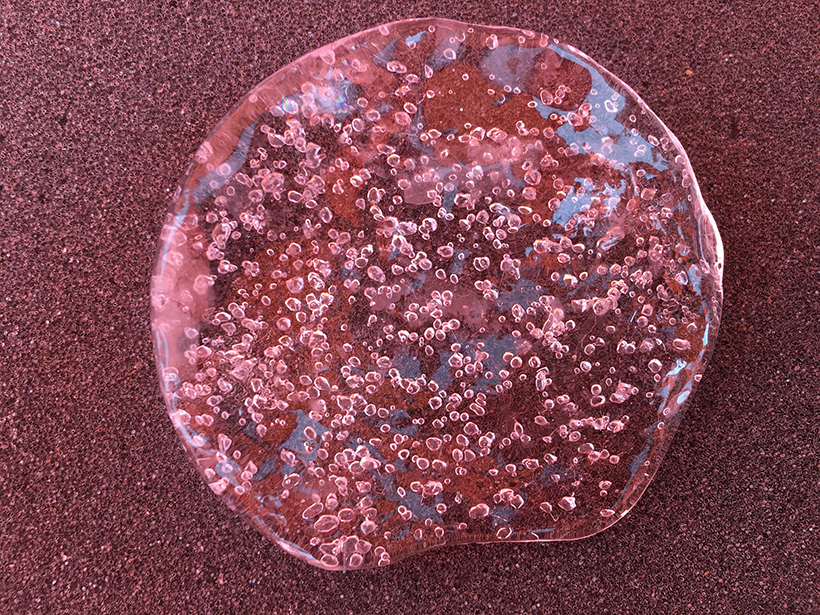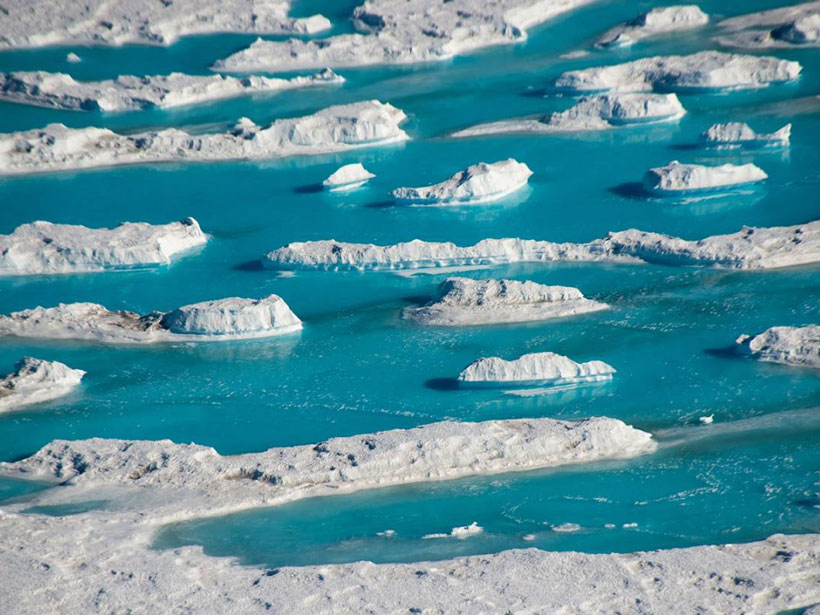A new community pool of seismic instrumentation will facilitate and advance geologic and cryospheric research in Earth’s ice-covered environments.
Antarctica
The Threat at Thwaites
This Antarctic glacier is rapidly losing mass. An international team is digging into the ice to figure out just how bad it is.
“Glacial Earthquakes” Spotted for the First Time on Thwaites
These seismic events, triggered by icebergs capsizing and ramming into Thwaites, reveal that the glacier has lost some of its floating ice shelf.
Antarctic Ice Cores Might Be Older Than Dirt
Using cosmogenic nuclide dating, scientists determined a 10-meter core just below the surface to be over a million years old.
Diagnosing Thwaites
The water under a vulnerable Antarctic glacier is warming. Its catastrophic collapse could trigger a dramatic increase in global sea level.
Controlled Explosions Pave the Way for Thwaites Glacier Research
Scientists detonate explosives in West Texas to prepare for fieldwork in West Antarctica.
What Lies Beneath Is Important for Ice Sheets
New research reconstructing the topography of Antarctica shows that the continent has 25% less land above sea level than when ice first started to accumulate 34 million years ago.
Antarctic Ice Cores Offer a Whiff of Earth’s Ancient Atmosphere
Bubbles of greenhouse gases trapped in ice shed new light on an important climate transition that occurred about a million years ago.
Freshwater Pools Show Antarctica Is More Vulnerable Than We Thought
East Antarctica’s lakes cluster in patterns similar to those on Greenland’s ice sheet, which is melting rapidly.
Drilling into the Past to Predict the Future
Climate change is at the center of a remarkable international drilling operation into Antarctica’s Ross Ice Shelf.

